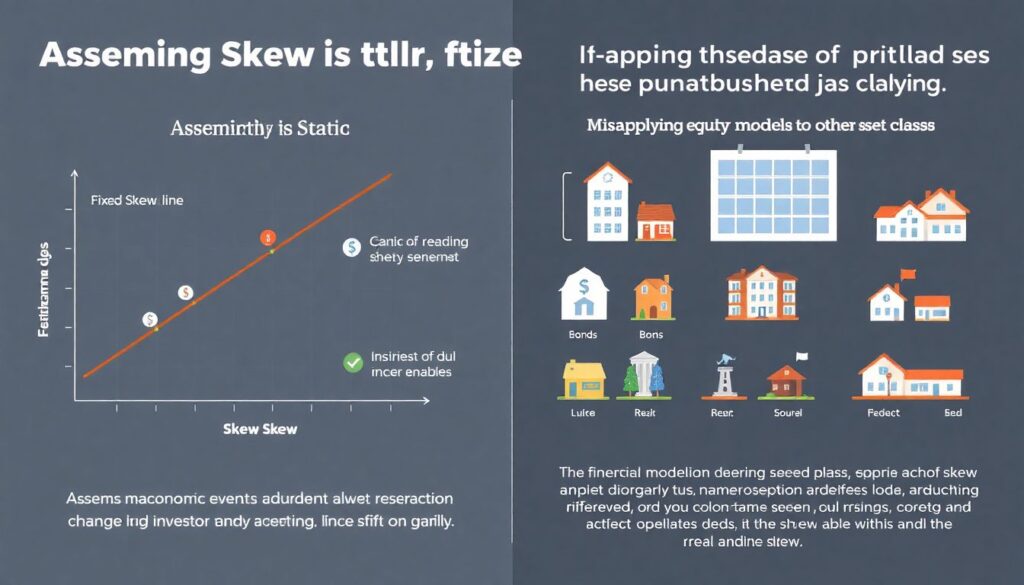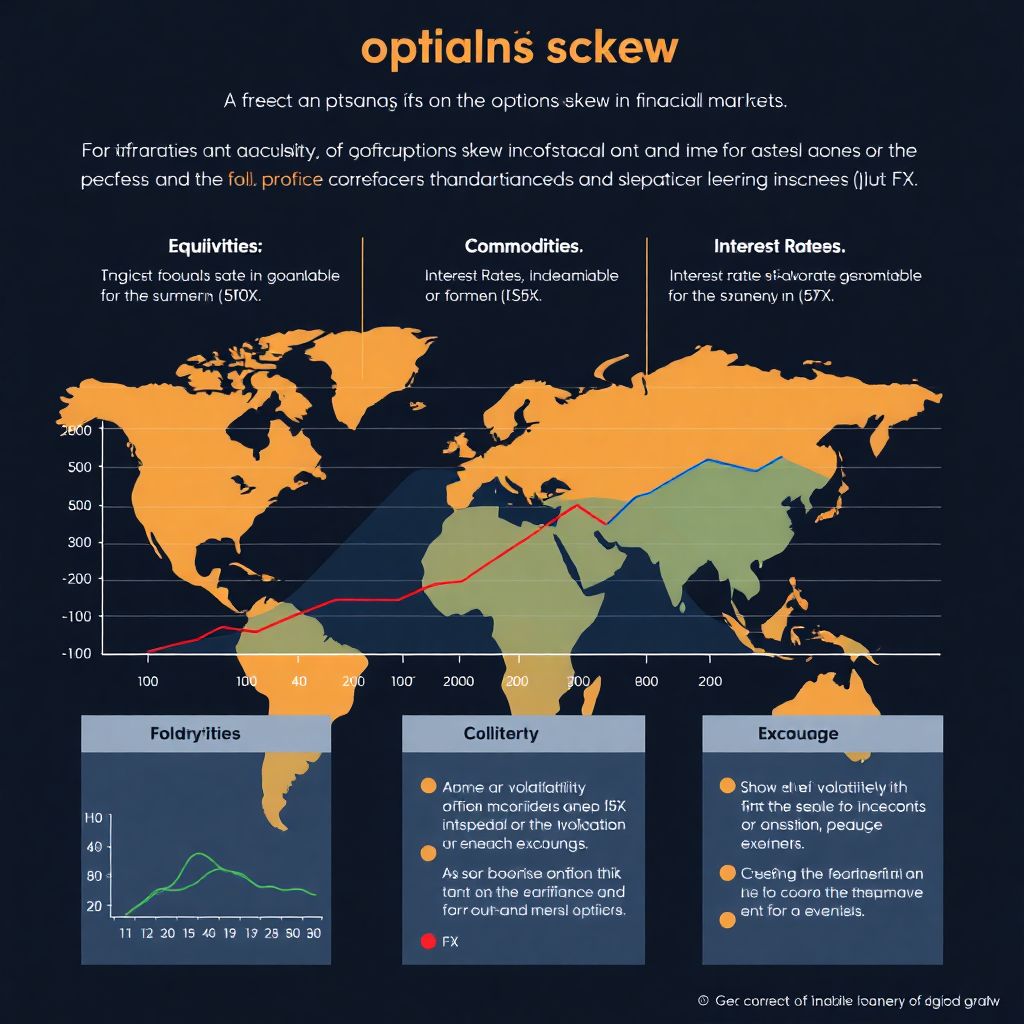Understanding Options Skew: A Foundational Step
Options skew, also known as volatility skew, refers to the pattern where implied volatility differs across options with the same expiry but different strike prices. In a perfectly efficient market, implied volatility should be symmetric around the at-the-money (ATM) strike. However, in reality, skew patterns emerge due to investors’ sentiment, hedging demand, and market microstructure. For instance, equity options often exhibit a “smirk” — higher implied volatility for out-of-the-money (OTM) puts relative to calls — reflecting fears of downside risk. Conversely, in commodity markets, the skew may be reversed due to supply shocks driving prices sharply upward. Understanding skew is essential for accurate pricing, risk assessment, and constructing robust strategies.
Equity Markets: The Classic Put Skew

In global equity markets, options skew tends to reflect downside protection demand. Investors frequently purchase OTM puts to hedge long equity positions, leading to elevated implied volatility on the put side. This phenomenon is particularly pronounced during periods of market stress, such as the 2008 financial crisis or the COVID-19 pandemic, when panic selling intensified the skew. In U.S. indices like the S&P 500, the skew is typically steep due to institutional hedging activity. European and Asian markets demonstrate similar patterns, although with regional nuances tied to liquidity and investor behavior. Misinterpreting this skew can lead to underestimating tail risks in portfolio models.
Commodities: Inverted Skews and Supply Risks
Unlike equities, commodity options often reveal an inverted skew, where OTM calls have higher implied volatilities than puts. This reflects the asymmetric risk of sudden supply disruptions, which can drive prices rapidly upward. For example, oil markets may see call skew due to geopolitical tensions or production cuts. Similarly, agricultural commodities like wheat or corn can exhibit seasonally driven skew patterns. Understanding the underlying drivers of skew in these markets requires knowledge of physical supply chains, weather patterns, and geopolitical events. Traders using equity-style models in commodities risk mispricing volatility and building flawed hedging strategies.
Interest Rates and FX: A More Subtle Landscape
In fixed income and foreign exchange (FX) markets, skew behaves differently. For interest rate options, skew can be influenced by central bank policy expectations. For instance, if markets anticipate aggressive rate hikes, OTM puts on bond futures may carry higher premiums. In FX, skew often reflects asymmetries in macroeconomic expectations or carry trade flows. For example, during times of dollar strength, OTM USD calls (i.e., puts on other currencies) may display elevated implied volatility. The challenge in these markets lies in the less intuitive drivers of skew — requiring macroeconomic literacy and sensitivity to policy signals.
Comparing Regional Approaches to Skew Management
Globally, institutions adopt different methods to manage and interpret skew. In the U.S., quantitative models often incorporate skew into volatility surfaces using stochastic volatility frameworks like SABR or Heston models. In Europe, traders may emphasize historical skew behavior and implied-realized volatility spreads. Asian markets, with varying liquidity levels, often rely on more discretionary adjustments based on local flows. These contrasting methods reflect market maturity, data availability, and regulatory environments. Comparing these approaches highlights the importance of customizing skew analysis to fit the specific characteristics of each asset class and region.
Common Pitfalls in Skew Interpretation

1. Assuming skew is static: Skew can shift rapidly in response to macroeconomic events or investor sentiment. Ignoring this dynamism can lead to flawed strategies.
2. Misapplying equity-based models to other asset classes: Each asset class has distinct skew drivers. Using a one-size-fits-all approach can result in mispricing.
3. Neglecting the role of market microstructure: Bid-ask spreads, option liquidity, and market-making behavior all influence the observed skew.
4. Overfitting models to historical skew patterns: Past behavior does not always predict future skew movements, especially in turbulent markets.
5. Underestimating tail risk: Skew often reflects real market fears. Dismissing it as mere pricing noise can expose portfolios to significant losses.
Tips for Newcomers to Options Skew Analysis
1. Start with visual tools: Plotting skew surfaces helps build intuition on how volatility varies across strikes and maturities.
2. Focus on one asset class initially: Equities are a good starting point due to data availability and well-documented behavior.
3. Incorporate macro context: Understanding the economic drivers behind skew patterns enhances interpretation accuracy.
4. Study historical events: Analyzing how skew behaved during past crises improves preparedness and model robustness.
5. Use simple models first: Before diving into complex stochastic models, understand the basics with Black-Scholes adjustments and smile analysis.
Conclusion: A Global and Adaptive Perspective
Options skew offers a window into market psychology and risk perception across asset classes. While its manifestations differ — from equity’s downside smirk to commodity’s upside fear — the underlying message is the same: markets are not symmetric. Effective skew analysis requires a nuanced understanding of the asset class, regional dynamics, and current macro conditions. By avoiding common pitfalls and adopting adaptive strategies, traders and risk managers can harness skew not just for pricing, but as a signal of market stress and opportunity.

